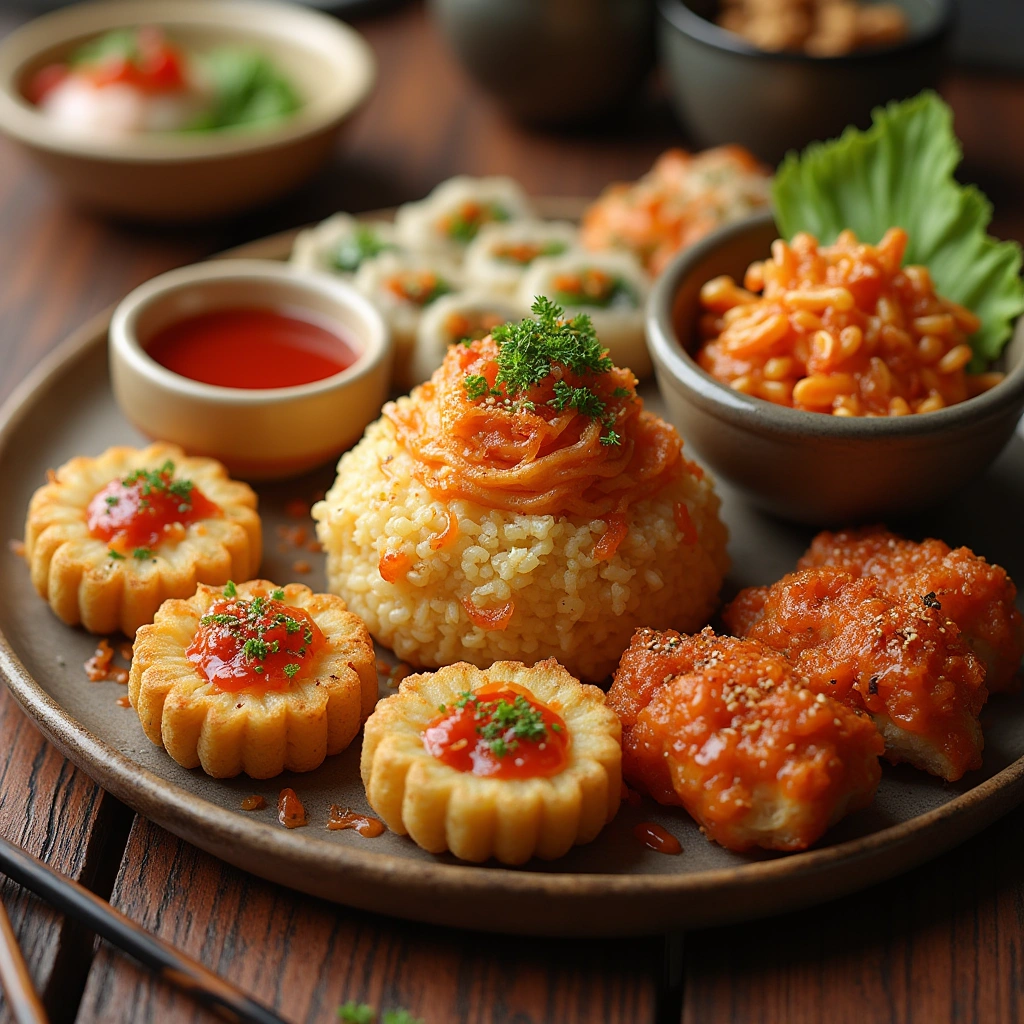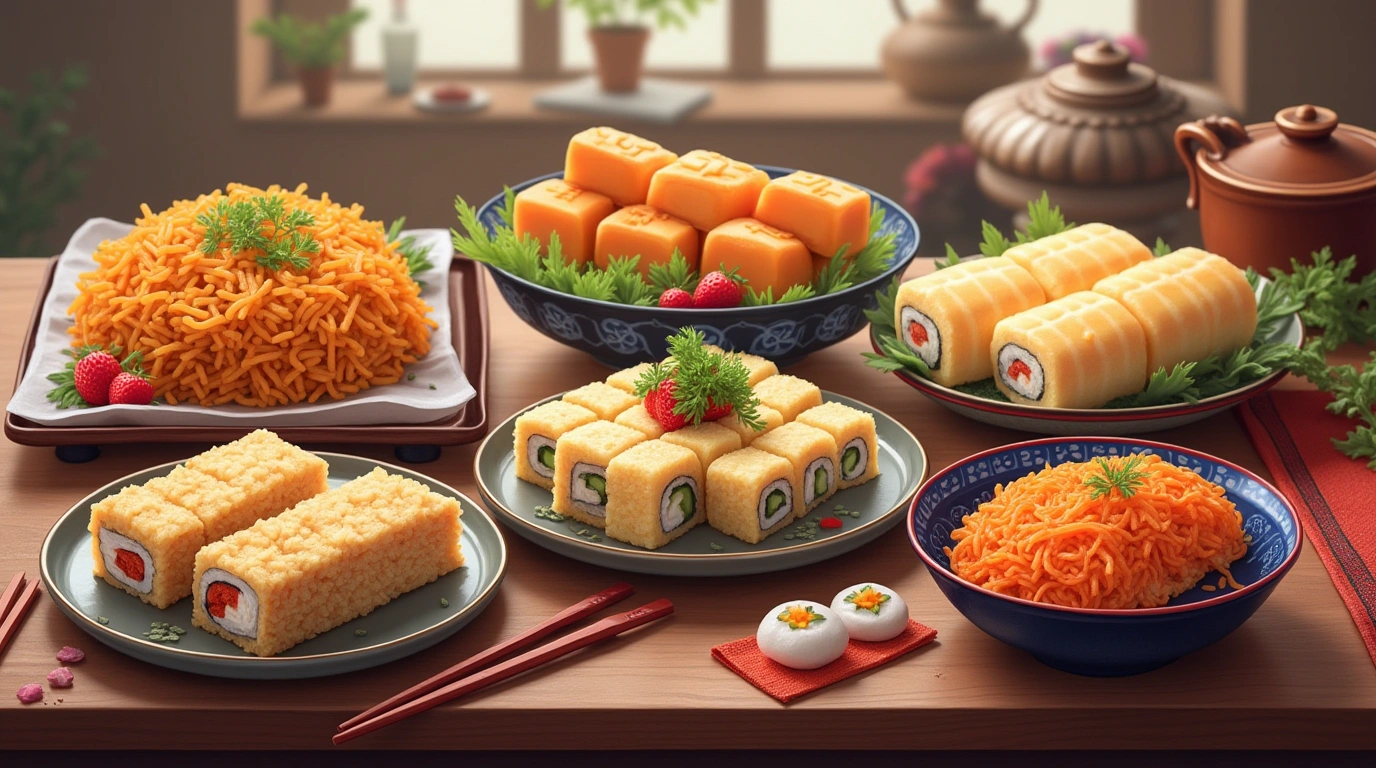Table of Contents
korean snacks
There’s something magical about Korean snacks—creamy, spicy, and packed with flavor in every bite. Imagine sinking your teeth into a warm, chewy tteokbokki or savoring the crispy crunch of kimchi fried rice cakes. These aren’t just snacks; they’re little bursts of joy that can turn any day into a celebration. But did you know that these irresistible treats have been delighting Koreans for centuries? In fact, one fun fact is that tteokbokki was originally served as a royal dish during the Joseon Dynasty! Who would’ve thought this humble snack had such regal beginnings?
What makes Korean snacks truly special is their simplicity. Most recipes require just a handful of ingredients and come together in under an hour, making them perfect for busy weeknights or impromptu gatherings. Plus, they’re family-friendly, meaning even kids will love digging in. If you enjoyed our recent post on “Korean Fried Chicken,” you’ll absolutely adore these appetizers—they share the same bold flavors but bring something entirely unique to the table. Whether you’re hosting friends or simply craving a comforting treat, these snacks are sure to leave everyone smiling. So grab your apron, and let’s dive into the world of Korean snacks!
What Are Korean Snacks?
Ah, the term Korean snacks”—does it make your mouth water yet? It should! Think of it like this: if food were celebrities, Korean snacks would be the ones stealing all the spotlight at parties. From savory pancakes (pajeon) to gooey cheese sticks wrapped in seaweed (cheese bukkumi), there’s no shortage of variety. But why call them “snacks”? Isn’t that too simple for such flavorful creations? Well, maybe we should rename them “life-changing bites” instead!
Ever wondered why some dishes sound so quirky? Take mandu (Korean dumplings), for example. Why not just call them “dumplings”? Because naming them after the word for “plentiful” gives us hope for endless portions, right? And who doesn’t want that? As the saying goes, “The way to a man’s heart is through his stomach”—but with Korean snacks, it’s more like “the way to happiness.” Ready to discover what makes these snacks so irresistible? Let’s get started!
Why You’ll Love This Recipe
First things first: Korean snacks are all about balance. They combine sweet, salty, and spicy notes in ways that leave your taste buds dancing. One standout feature is their versatility—you can enjoy them as finger foods, appetizers, or even light meals. For instance, take twigim (deep-fried tempura). Its golden exterior hides tender vegetables or seafood inside, creating a satisfying crunch with every bite. Plus, making these snacks at home saves money compared to buying pre-packaged versions from stores. Bonus points for knowing exactly what goes into your food!
Another reason to fall in love? The toppings. From melted cheese to drizzles of gochujang sauce, each layer adds depth and excitement. Compared to other Asian appetizers like spring rolls, Korean snacks often pack bolder flavors without being overly complicated. Need proof? Try whipping up a batch of pajeon—it’s easier than you think! By the end of this post, you’ll realize how simple yet rewarding it is to create these treasures in your own kitchen.
How to Make Korean Snacks
Quick Overview
Making Korean snacks is easier than you might imagine. These recipes emphasize quick preparation times and straightforward techniques, ensuring even beginners can succeed. For example, most dishes take around 30 minutes from start to finish, leaving plenty of time for relaxation or socializing while dinner cooks. Whether you’re crafting soft mozzarella-filled bukkumi or zesty jeon (pancakes), the results promise rich textures and unforgettable tastes. Now, let’s break down everything you need to know step by step.
Key Ingredients for Korean Snacks
To whip up authentic Korean snacks, here’s what you’ll need:
- Rice Cakes (Tteok) – Chewy and versatile, these are essential for classics like tteokbokki.
- Gochujang—A staple chili paste that brings heat and umami.
- Flour is usedUsed for battering items like pajeon or twigim.
- Vegetables—– Think scallions, carrots, and zucchini for added crunch.
- Cheese—optional but highly recommended for cheesy bukkumi.
- Egg adds richness to pancake-like dishes.

Step-by-Step Instructions
1. Prepare Your Ingredients
Start by measuring out all your ingredients. For tteokbokki, cut the rice cakes into bite-sized pieces if necessary. Combine gochujang, soy sauce, sugar, and water in a bowl to create the sauce.
2. Cook the Sauce
Heat a skillet over medium heat and pour in the sauce mixture. Bring it to a simmer, stirring occasionally to prevent sticking.
3. Add Rice Cakes
Once the sauce begins thickening, add the rice cakes and fish cake slices (optional). Stir gently to coat evenly.
4. Finish with Toppings
After 10–15 minutes, when the sauce has reduced and clings to the rice cakes, sprinkle sliced green onions on top. Serve immediately for maximum flavor.
What to Serve Korean Snacks With
No Korean snack session is complete without accompaniments that elevate the experience. Pair your creations with beer.
- Ju or Beer: Light drinks complement spicier snacks beautifully. Kimchi
- Tangy fermented cabbage adds a refreshing contrast.
- Side Salads:ads Opt for spinach or cucumber salads for lighter optionDessert:
- rt : End with patbingsu (shaved ice) for a cooling finale.
Top Tips for Perfecting Korean Snacks
Here are some insider tricks to ensure success:
- Substitute SSmartly: Use sriracha if you can’t find gochujang, though the latter offers richer flavor.
- Adjust Heat Levels Start with less spice and increase gradually based on preference.
- Avoid Overcrowding Pans: Cook in batches to maintain proper texture.
Storing and Reheating Tips
Leftovers happen—and that’s okay! Store cooked snacks in an airtight container in the fridge for up to three days. To reheat, microwave briefly or toast in a pan for extra crispiness. For longer storage, freeze portions individually, then thaw before reheating.
This Recipe Broke the Internet… Did It Work for You?
There are no reviews yet. Be the first one to write one.


